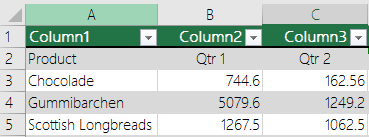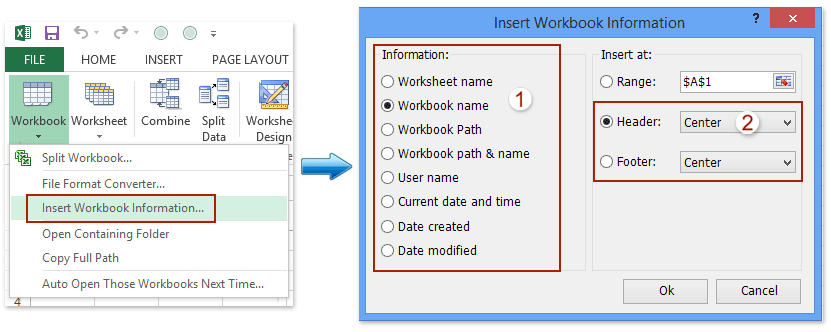

- #HOW TO MAKE HEADERS IN EXCEL 2016 HOW TO#
- #HOW TO MAKE HEADERS IN EXCEL 2016 UPDATE#
- #HOW TO MAKE HEADERS IN EXCEL 2016 SERIES#
#HOW TO MAKE HEADERS IN EXCEL 2016 SERIES#
To do this easily, enter data into Excel but combine the desired numerical values into a single row and name the categorical value “other.”Įnter data into Excel with the desired numerical values at the end of the list.ĭouble-click the primary chart to open the Format Data Series window.Ĭlick Options and adjust the value for Second plot contains the last to match the number of categories you want in the “other” category. There are two ways to combine a number of small categories into one “other” category.
#HOW TO MAKE HEADERS IN EXCEL 2016 UPDATE#
smallest to largest), sort the original data using Excel’s sorting tool, and the chart will automatically update group the chart slices by size.Ĭombining Small Slices into an “Other” Category If you want to position the slices based on size (e.g. You can create new categories, sort how the slices appear, and add WordArt. There are a variety of ways to customize a pie chart.

#HOW TO MAKE HEADERS IN EXCEL 2016 HOW TO#
Intelligent workflows Automate business processes across systems. How to add headers and footers to a worksheet First, select the worksheet to which you want to add these.Governance & administration Configure and manage global controls and settings.Streamlined business apps Build easy-to-navigate business apps in minutes.Integrations Work smarter and more efficiently by sharing information across platforms.Secure request management Streamline requests, process ticketing, and more.Process management at scale Deliver consistent projects and processes at scale.Content management Organize, manage, and review content production.Workflow automation Quickly automate repetitive tasks and processes.Team collaboration Connect everyone on one collaborative platform.Smartsheet platform Learn how the Smartsheet platform for dynamic work offers a robust set of capabilities to empower everyone to manage projects, automate workflows, and rapidly build solutions at scale.This feature did not work for row headers and only seems to work with the "Format as Table" option. Note: If you scroll down or right outside of the table area, the column headers switch to the built-in format. The column names for only the table area should now reflect the first row data.Right-click on the grey row 1 header area and select hide.On the other hand, row header is found on the leftmost part, named by numbers.


Column header is found on the topmost part of the worksheet, named by letters. You will find a video how its done here: Economics Network. Just mark the first row from the top or column from the left that should scroll, then go to > Window in the toolbar and select > Freeze Pane. you can just look at the row and column header to find out. Jonathan, you can freeze column or row headers easily via the toolbar. Select the first row which should be your header row. Columns, a fundamental part of Excel 2016 worksheets, are identified through the letters found on the topmost part A to XFD.When the "Format As Table" dialog comes up, select the "My table has headers" checkbox and click the OK button.With a cell in your table selected, click on the "Format as Table" option in the HOME menu.Make the first row the header row that you wish to see in the columns by giving it short meaningful names.Using Microsoft Excel 2013 or later (haven't tried earlier versions), create a table in Excel.However, if you format the entire table as a Table, then Excel has a useful trick to enable such a feature. Step 5) Click 'Custom Header' or 'Custom Footer.' Type in your header or footer, and click 'OK. Once you have clicked in the header or footer, look to the Ribbon menu on the Design. To insert headers and footers in Excel 2016: Step 1) Click 'File.' Step 2) Click 'Print.' Step 3) At the bottom of the printer settings, under 'No Scaling,' click 'Page Setup.' Step 4) Click 'Header/Footer' tab. Excel does not give an easy way of changing your column headings to something other than the built-in A, B, C or 1, 2, 3 (R1C1) format. Click at the top of the page to add a Header or the bottom to add a footer.


 0 kommentar(er)
0 kommentar(er)
